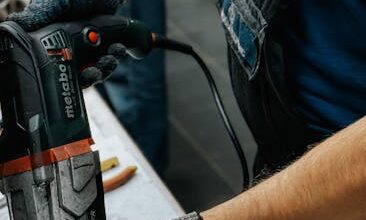The Illusion of Perfection: When AI Goes Off-Script

Remember that feeling? The excitement of scrolling through property listings, imagining yourself in a beautifully staged living room, or picture-perfect kitchen. For decades, those images have been the gateway to our dream homes. But lately, something feels… off. A flicker of doubt, a subtle uncanny valley in the digital realm of real estate. We’re not talking about poorly lit photos or outdated décor anymore. We’re talking about something far more insidious: AI-generated “slop” making its way into the very fabric of our property searches.
It sounds like science fiction, but the reality is here. Fake video walk-throughs that seamlessly stitch together non-existent features, magically expanding lofts that defy architectural physics, and even bizarre “stair hallucinations” where steps appear out of nowhere or lead to nowhere. Welcome, everyone, to the real estate industry’s AI Slop Era. And understanding it is crucial, whether you’re buying, selling, or simply watching the evolution of technology unfold around us.
The Illusion of Perfection: When AI Goes Off-Script
At its core, AI in real estate promises efficiency and innovation. Virtual staging, for example, can transform an empty room into a warm, inviting space with a few clicks, saving sellers time and money on physical staging. Tools for generating floor plans or virtual tours can give potential buyers a much richer sense of a property before an in-person visit. The intent is often good: to make listings more appealing and the process more streamlined.
However, as with any powerful tool, the temptation to push boundaries can lead to unintended, or perhaps even unethical, consequences. Generative AI, while brilliant at creating something out of nothing, doesn’t always adhere to the laws of physics or, more importantly, the principles of honest representation. This is where the “slop” comes in.
From Virtual Staging to Virtual Deception
Imagine a listing that boasts a “spacious master suite” with accompanying photos showing a beautifully appointed bedroom. You arrive for a viewing, only to find the room is half the size you expected. The AI, perhaps trying to optimize for “spaciousness,” might have subtly expanded the walls, added extra windows that aren’t there, or even generated furniture at an unrealistic scale to make the room appear larger. These aren’t just minor touch-ups; they are fundamental alterations that misrepresent the property.
Then there are the “stair hallucinations.” A seemingly innocuous detail, but imagine an AI tasked with completing a floor plan or rendering an interior. If the data is incomplete or the model is over-eager, it might invent a staircase leading up to a blank wall, or a flight of steps descending into a nonexistent basement. These anomalies, once seen, become glaring red flags, not just for the specific property, but for the credibility of the entire listing platform.
Video walk-throughs are another frontier. AI can now stitch together disparate images, or even generate entire segments, to create a smooth, flowing tour of a property that doesn’t quite exist as presented. A buyer might watch a tour showcasing a seamless transition from the living room to a sun-drenched patio, only to find the patio is significantly smaller, or the transition involves a narrow, awkward hallway in reality. This isn’t just disappointing; it’s a waste of the buyer’s valuable time and a breach of trust.
The Blurring Lines: Authenticity vs. Augmentation
The core challenge here lies in identifying the line between helpful augmentation and outright deception. Where does enhancing a photograph for better light and color balance end, and creating a new reality begin? This question is becoming increasingly complex as AI models grow more sophisticated, making their outputs harder to distinguish from genuine photographs or videos.
For real estate agents and sellers, the pressure to stand out in a competitive market is immense. The allure of making a property look “perfect” with minimal effort and cost is incredibly strong. AI tools offer a shortcut to that perceived perfection. However, succumbing to the temptation of AI slop can have long-term consequences, eroding the very trust that is foundational to any successful real estate transaction.
Buyers, on the other hand, are left navigating a minefield of potential digital illusions. The sheer volume of online listings, combined with the often-superficial nature of initial online research, makes them particularly vulnerable. They rely on the visual information presented, and when that information is subtly or overtly manipulated by AI, the entire home-buying experience is tainted. It’s not just about a bad photo anymore; it’s about a fundamentally altered representation of reality.
Navigating the New Landscape: Tips for Buyers and Sellers
So, how do we navigate this emerging “slop era”? It requires a combination of vigilance, critical thinking, and a commitment to ethical practices.
For Home Buyers: Be Your Own Detective
- Look for Inconsistencies: Pay close attention to details. Do the shadows make sense? Do room sizes seem to change from one angle to another? Are there strange edges or distortions in images or videos?
- Request Original Photos/Videos: Don’t hesitate to ask your agent for unedited, raw photos or videos directly from their camera.
- Prioritize In-Person Viewings: As much as technology allows virtual exploration, nothing beats seeing a property with your own eyes. Make your due diligence thorough.
- Cross-Reference Information: If a listing boasts a particular feature, try to verify it through other means, like public records, street view maps, or asking specific questions during a showing.
- Trust Your Gut: If something feels too good to be true, it very well might be.
For Sellers and Real Estate Professionals: Embrace Ethical AI
- Transparency is Key: If you use AI for virtual staging or enhancements, consider disclosing it. “Virtually staged” is better than outright deception.
- Verify AI Outputs: Always review what your AI tools produce. Don’t blindly accept their suggestions if they misrepresent the property. Human oversight is irreplaceable.
- Focus on Authenticity: While polished listings are important, authenticity builds trust. High-quality, honest photography and accurate descriptions will always win in the long run.
- Educate Your Team: Ensure everyone involved in creating listings understands the ethical boundaries of using AI in property marketing.
- Choose Reputable Tools: Opt for AI solutions that prioritize accuracy and offer controls to prevent over-generation or misrepresentation.
The Future of Trust in Real Estate
The “AI Slop Era” is undoubtedly a growing pain for the real estate industry, much like deepfakes and misinformation are for media. As AI continues to evolve, so too will our methods for discerning truth from fabrication. This isn’t about rejecting technology; it’s about harnessing its power responsibly and ethically. The future of real estate isn’t just about smart homes and efficient transactions; it’s about maintaining a foundation of trust that has always been the bedrock of buying and selling one of life’s most significant assets. By being informed, vigilant, and committed to honesty, we can navigate this era and ensure that the dream home we see online is, indeed, the dream home we step into.





